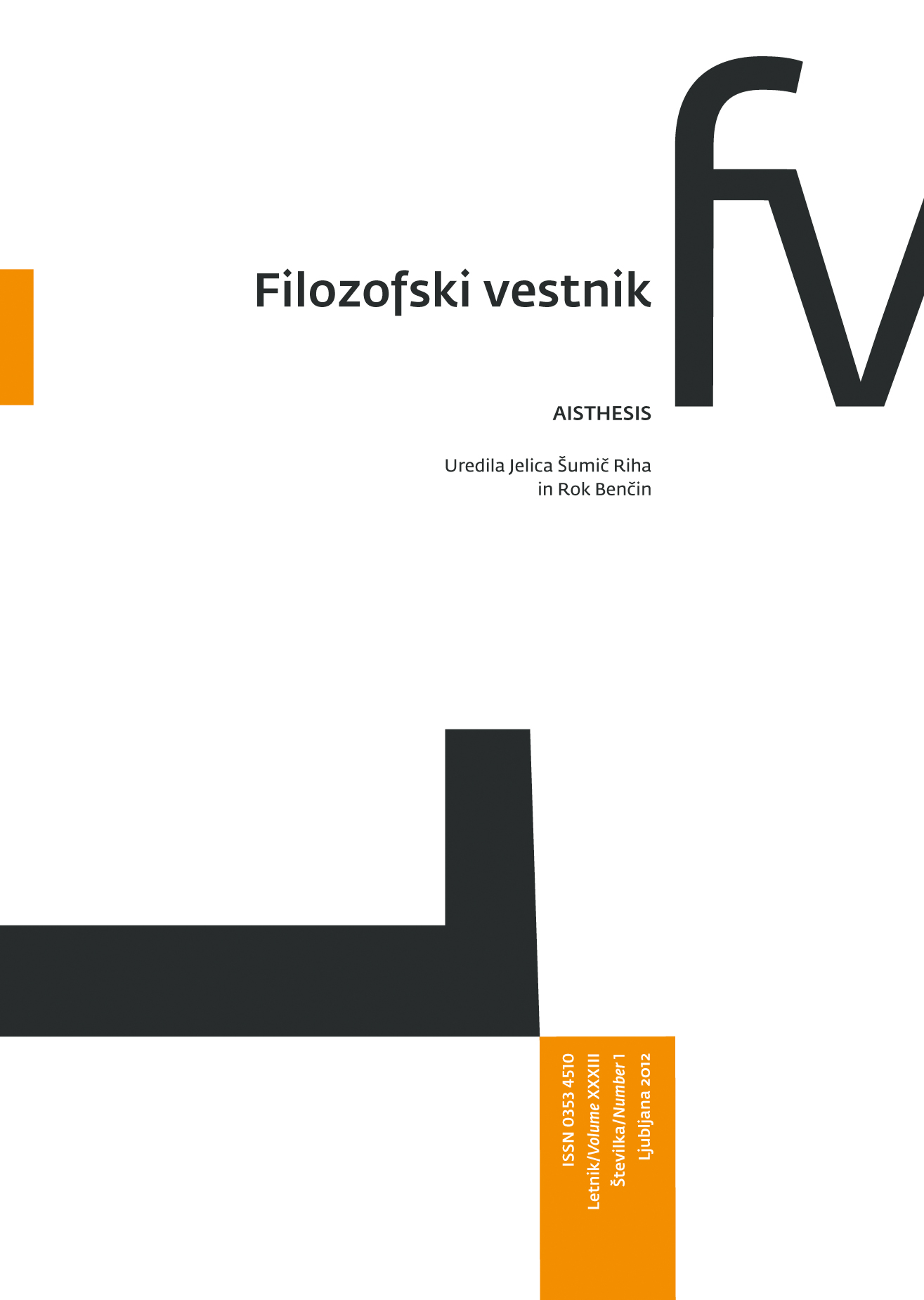Estetski režim umetnosti med performativno subverzijo in transferno transgresijo
Ključne besede:
estetika, teorija govornih dejanj, subjektivacija, Jacques RancièrePovzetek
Rancièrovo estetiko ena od poti v hegemoni angloameriški prostor vodi prek angloameriške teorije performativa, ki pa danes tam učinkuje prek Derridaja. Takšno pripisovanje performativnosti Rancièrovemu estetskemu režimu umetnosti je zato pripisovanje ne le performativnosti, pač pa tudi subverzivnosti. S tem ukine ne le Austinovo razlikovanje med umetnostno in performativno izjavo, ampak tudi Rancièrovo distinkcijo med heteronomno avtonomijo estetskega režima in nemogočo umetnostno avtonomijo. Austin namreč estetske izjave eksplicitno obravnava kot etiolacije performativov (te pa kot ohranjajoče dano delitev čutnega), Rancière pa kot prakso suspenza in ne subverzije ideoloških praks (te prakse pa kot vključujoče performative). Austin torej predlaga negativni koncept umetnosti, pozitivno konstitucijo katerega lahko najdemo pri Rancièru, ki ga torej ne kaže brati z Judith Butler, pri kateri si pripisovalci performativnosti estetskemu režimu sposojajo pojem performativnosti. A to performativistično prilaščanje teorije estetskega režima vendarle tvori s to teorijo totaliteto, kolikor že Rancière odmisli pogojenost politične subjektivacije z institucionaliziranim poljem simbolnega.Prenosi
Podatki o prenosih še niso na voljo.
Prenosi
Objavljeno
2016-02-06
Kako citirati
Habjan, J. (2016). Estetski režim umetnosti med performativno subverzijo in transferno transgresijo. Filozofski Vestnik, 33(1). Pridobljeno od https://ojs.zrc-sazu.si/filozofski-vestnik/article/view/4182
Številka
Rubrike
Aisthesis
Licenca
Avtorji jamčijo, da je delo njihova avtorska stvaritev, da v njem niso kršene avtorske pravice tretjih oseb ali kake druge pravice. V primeru zahtevkov tretjih oseb se avtorji zavezujejo, da bodo varovali interese založnika ter da bodo povrnili morebitno škodo.
Podrobneje v rubriki: Prispevki





